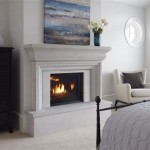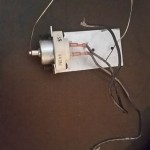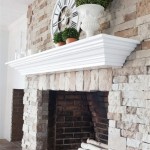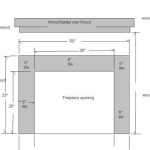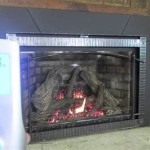How Do I Paint My Fireplace Doors?
Painting fireplace doors can significantly enhance the aesthetic appeal of a hearth and revitalize the overall look of a living space. Over time, the original finish on fireplace doors can become worn, chipped, or simply outdated. Repainting them offers a cost-effective alternative to replacing the entire unit. However, due to the high temperatures these doors endure, selecting the right paint and preparation methods is crucial for a successful and long-lasting result. This article provides a comprehensive guide on how to properly paint fireplace doors.
Before beginning, safety precautions are paramount. Ensure the fireplace is completely cool and has not been used for at least 24 hours. Gather all necessary materials in a well-ventilated workspace. This project requires meticulous attention to detail and adherence to safety guidelines to achieve a professional finish.
Key Point 1: Preparation and Safety
Proper preparation is arguably the most critical step in painting fireplace doors. Thorough cleaning and surface preparation will ensure optimal paint adhesion and prevent premature chipping or peeling. The safety of the individual undertaking the project is also of primary importance.
First, carefully detach the fireplace doors. Most doors are designed to be easily removed, typically involving hinges or simple mounting brackets. Consult the fireplace manufacturer's instructions if unsure about the removal process. Once detached, place the doors on a stable work surface, preferably covered with a drop cloth or old newspapers to protect the area from paint spills.
Next, clean the doors thoroughly. Use a wire brush or scraper to remove any loose paint, rust, or debris. Pay close attention to corners and edges where build-up is common. Once the loose materials are removed, wash the doors with a degreasing cleaner to eliminate any grease, soot, or residue. Rinse thoroughly with clean water and allow the doors to dry completely. This ensures the paint adheres properly and avoids future problems.
Sanding is essential for creating a smooth surface and improving paint adhesion. Use a fine-grit sandpaper (around 220-grit) to lightly sand the entire surface of the doors. This will create a slightly roughened texture, allowing the paint to grip better. After sanding, wipe the doors clean with a tack cloth to remove any sanding dust. Dust particles can interfere with the paint finish, resulting in an uneven or textured appearance.
Safety considerations are crucial throughout the preparation process. Wear safety glasses to protect eyes from flying debris during scraping and sanding. Use gloves to protect hands from harsh cleaning chemicals. Perform the cleaning and sanding in a well-ventilated area or outdoors to avoid inhaling dust or fumes. A respirator mask can provide additional protection from dust particles, especially during sanding.
Key Point 2: Selecting the Right Paint
Choosing the correct type of paint is essential for painting fireplace doors due to the high temperatures they are subjected to. Standard paints are not designed to withstand such heat and will likely blister, crack, or emit unpleasant odors when the fireplace is in use. High-heat-resistant paint is specifically formulated for applications involving elevated temperatures, such as fireplaces, stoves, and automotive parts.
High-heat paint is typically available in aerosol spray cans or liquid form for application with a brush or sprayer. Aerosol spray paints offer convenience and ease of application, providing a smooth and even finish. Liquid paints may offer greater control over the application process and are suitable for larger or more intricate surfaces. Regardless of the chosen application method, ensure the selected paint is specifically labeled as "high-heat resistant" and suitable for temperatures exceeding the maximum operating temperature of the fireplace doors. Generally, a paint rated for at least 1200 degrees Fahrenheit is appropriate, though higher ratings may be preferable.
When selecting the paint color, consider the overall aesthetic of the living space. Black is a common and classic choice for fireplace doors, offering a sleek and modern look. However, other colors, such as bronze, silver, or copper, can also be used to complement the existing décor. Matte or satin finishes are generally preferred over glossy finishes, as they tend to be more durable and less likely to show imperfections.
Before applying the high-heat paint to the fireplace doors, test the paint on a small, inconspicuous area to ensure compatibility and desired color. Allow the test area to dry completely before proceeding with the full application. This step helps to avoid potential problems with color matching or paint adhesion.
Key Point 3: Painting and Curing Process
With the doors properly prepared and the correct paint selected, the actual painting process can begin. Applying the paint in thin, even coats is essential for achieving a professional-looking finish and preventing runs or drips. The curing process, which allows the paint to fully harden and bond to the surface, is equally important for long-term durability.
If using aerosol spray paint, hold the can approximately 8-10 inches away from the surface of the fireplace doors. Apply the paint in a smooth, sweeping motion, overlapping each stroke slightly to ensure complete coverage. Avoid applying too much paint in one area, as this can lead to runs or drips. If using liquid paint, apply it with a high-quality brush or sprayer, following the manufacturer's instructions. Apply thin, even coats and allow each coat to dry completely before applying the next.
Typically, two to three coats of paint are recommended for optimal coverage and durability. Allow each coat to dry for the amount of time specified by the paint manufacturer. This drying time is crucial for proper adhesion and prevents the paint from peeling or chipping prematurely.
The curing process is essential for high-heat paint to fully harden and resist the high temperatures of the fireplace. Refer to the paint manufacturer's instructions for specific curing recommendations. Generally, the curing process involves gradually increasing the temperature of the painted surface over a period of time. This can be achieved by running the fireplace on low heat for a short period, then gradually increasing the heat over several hours. Ensure adequate ventilation during the curing process, as the paint may release fumes as it cures. The curing process is critical for the long-term performance and durability of the painted fireplace doors.

Fireplace Door Update With Spray Paint Roots Wings Furniture Llc

Fireplace Door Update With Spray Paint Roots Wings Furniture Llc

How To Spray Paint A Brass Fireplace Insert Erfly House

How To Spray Paint A Brass Fireplace Insert Erfly House

How To Update Fireplace Brass

How To Spray Paint A Brass Fireplace Insert Erfly House

Brass Fireplace Update East Coast Creative

How To Refinish Rusted Fireplace Doors

How To Spray Paint A Brass Fireplace Insert Erfly House

How To Paint A Brick Fireplace The Right Way
Related Posts

